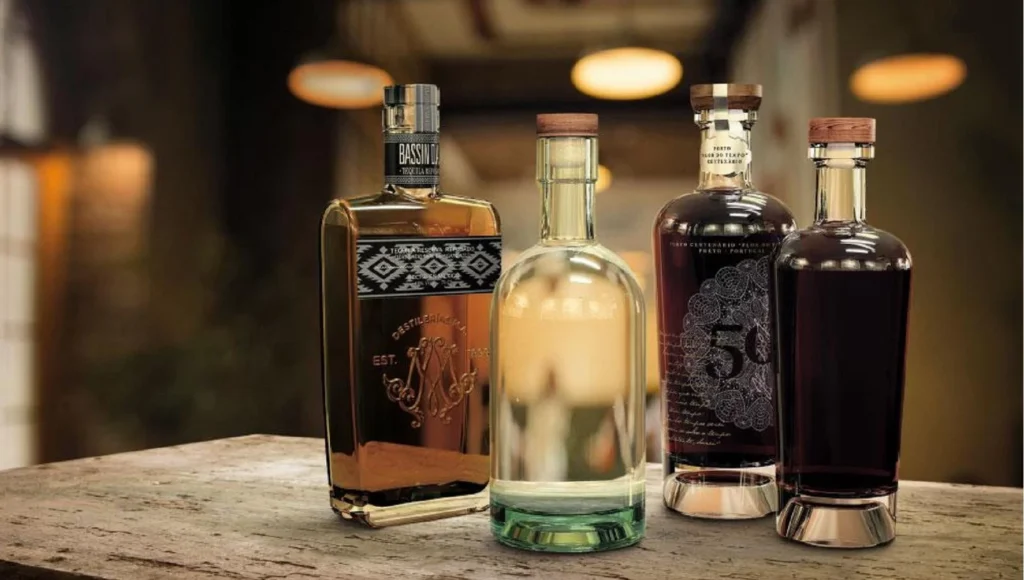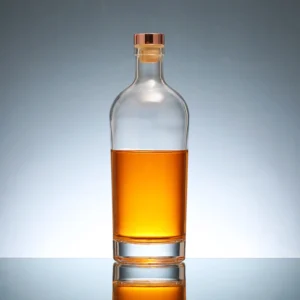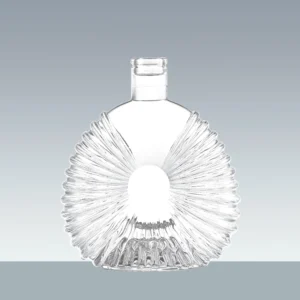Whisky bottles sizes in the world! It’s a fascinating topic, indeed. Whiskey bottles have several…
The Evolution of Liquor Bottle Design from Ancient Times to Today
Have you ever wondered how liquor bottle designs have transformed over the centuries? From the ancient civilizations’ rudimentary vessels to the exquisitely crafted bottles that grace our modern bars and homes, the evolution of liquor bottle design is a fascinating journey that reflects history, culture, and artistic sensibilities.
Throughout history, liquor bottle design has evolved from simple clay containers to stunning glass masterpieces, showcasing the creativity and branding of modern distilleries. Each era brought unique shapes, materials, and decorations, leaving a trail of innovation and design excellence. These bottles offer valuable insights into the evolution of society, craftsmanship, and human taste.
Let’s explore the captivating world of liquor bottle design and the stories that shaped our drinking culture.
Contents
hide
Ancient Origins of Liquor Containers
Long ago, ancient civilizations found ways to keep their favorite fermented drinks safe. They used natural materials like clay, wood, and animal skins to create containers for their liquor. These containers, being functional, were also vital in their cultural rituals and celebrations.
As time passed, people improved the way to store liquor. They started using clay pots, and later, the ancient Greeks and Romans made elegant containers called amphorae. These amphorae had long necks and handles, making it easy to carry them around. They also looked beautiful with their intricate designs, showing how much they cared about aesthetics.
Liquor containers were not just for storage; they had deep cultural and symbolic meanings. They were used in religious ceremonies, feasts, and parties, becoming essential to their societies. The shape, color, and decorations of these containers revealed the beliefs and values of those ancient civilizations.
Archaeologists have found these ancient liquor containers globally, giving us valuable knowledge about the past. These discoveries reveal the technology they had back then and the different types of alcoholic drinks they enjoyed.
Today, the design of liquor bottles still carries the influence of these ancient containers. This touch of history makes their products feel authentic and traditional, appealing to today’s consumers.
Liquor Bottles in the Middle Ages
In the Medieval era, skilled glassblowers created beautiful containers with intricate shapes and details. These bottles, as functional works of art, were proudly displayed on the tables of kings and nobles. Adorned with fancy decorations, these liquor bottles showcased the talents and creativity of the artisans.
During that time, such bottles became a way for the wealthy elite to show off their refined taste and high social status. Owning these fancy bottles was a sign of luxury and wealth.
The bottles became the center of attention, adding to the festive atmosphere at grand feasts and parties. Guests admired the craftsmanship while celebrating special occasions with a toast.
Some medieval liquor bottles have survived centuries and have been kept in museums and collections. They give us a glimpse into the extravagant lifestyle of that time.
Modern liquor packaging often takes inspiration from the elegance and artistry of the medieval era. By connecting the past with the present, these bottles appeal to consumers and make them feel connected to history while enjoying their drinks.
The Renaissance and The Revolution of Liquor Packaging
During the Renaissance, liquor packaging evolved a lot thanks to advancements in glassmaking. Glassblowers got better at their craft, creating more elegant and uniform bottles. They also used molds to make bottles in larger quantities so more people could enjoy them.
Different bottle shapes and sizes emerged, perfect for various drinks like spirits and wines. These unique designs helped distillers and vintners stand out from one another.
Liquor bottles evolved into more updated artwork. They were decorated with intricate engravings, embossments, and colorful designs, reflecting the flourishing art and culture of the time. People prized these beautiful bottles for both their contents and their appearance.
Owning visually appealing liquor bottles remained a status symbol. Wealthy people showed off their fine bottles to display their wealth and good taste. Having elegant liquor bottles at gatherings became a sign of sophistication.
As global trade expanded during the Renaissance, liquor bottles from distant lands carried exotic spirits, enriching experiences worldwide.
The innovations of the Renaissance still influence modern liquor packaging. Different bottle shapes and aesthetics are still used today to reflect the brand’s identity, just like they did.
The Industrial Age and The Liquor Bottles
The Industrial Age transformed how liquor bottles were designed and used. The latest machines and technology made glassmaking and bottling faster and cheaper, allowing distilleries and wineries to produce bottles in large quantities to meet the growing demand for alcohol.
Bottle designs became standardized, meaning they all had the same shape and size to make things more efficient. As the liquor market expanded, storing and transporting the bottles became easy.
As competition increased, manufacturers started putting labels on the bottles to show their brand names, logos, and product information. It helped customers know what they were buying and made each brand stand out.
To protect consumers and ensure accurate information, the government introduced regulations for bottle labeling, preventing fake products and ensuring people knew what they were drinking.
During this time, bottle caps evolved from corks to metal caps and screwtops, which sealed the bottles better and kept the beverages fresh.
Liquor bottles now blend historical elements with modern looks to appeal to different customers. Standardized bottle shapes and labeling are now the norm in the modern liquor bottle industry, making production and distribution more efficient.
The Golden Age of Glass Design
In the late 19th and early 20th centuries, Art Nouveau revolutionized liquor bottle designs, creating a “Golden Age of Glass Design.” This artistic movement celebrated nature’s beauty, inspiring liquor bottles with flowing lines, organic shapes, and intricate floral and fauna motifs.
Art Nouveau artists saw liquor bottles as blank canvases, infusing them with enchanting expressions of romance and elegance. Renowned designers like René Lalique, Emile Gallé, and Louis Comfort Tiffany played a crucial role during this period, elevating liquor bottles to works of art.
René Lalique’s visionary designs, Emile Gallé’s captivating enamel techniques, and Louis Comfort Tiffany’s innovative use of luminosity added ethereal qualities to the bottles. Their artistry continues to inspire modern designers.
Today, Art Nouveau’s influence lives on in contemporary liquor packaging. Organic forms, intricate details, and artistic expressions still inspire designers worldwide. Modern brands often incorporate these elements, creating a timeless and nostalgic allure.
Prohibition and the Rise of Concealable Bottles
During the US Prohibition era (1920-1933), alcohol was banned, leading to a thriving underground market for bootlegged liquor. To evade detection, people and businesses ingeniously disguised liquor bottles as everyday items, creating a clever concealment strategy for their illicit contents.
Craftsmen demonstrated remarkable creativity by replicating ordinary objects with hidden compartments. From hollowed-out books to fruit jars and milk bottles, these designs facilitated the illegal distribution of alcohol during Prohibition.
Speakeasies, secret bars that sold alcohol illegally, provided social havens during this time. Concealed bottles allowed patrons to discreetly enjoy spirits, adding an adventurous charm to their clandestine experience.
Concealable bottles became symbols of defiance against Prohibition’s restrictive laws, representing the desire for personal freedom and choice while engaging in illicit activities.
Although Prohibition ended in 1933, the legacy of concealable liquor bottles continues to influence liquor packaging history. While no longer necessary, modern brands draw inspiration from these designs to evoke nostalgia and create unique and engaging bottles.
Mid-century Modern Liquor Bottle Design
From the 1940s to the 1960s, liquor bottle packaging was heavily influenced by mid-century modern design. This style embraced simplicity, moving away from ornate designs to focus on essential elements. Clean lines and geometric shapes defined the aesthetic, allowing the liquid inside to be the main attraction.

The liquor bottles prioritized usefulness, featuring ergonomic shapes and standardized sizes for an improved user experience, making storage and transport much easier for consumers.
Advancements in materials and manufacturing techniques brought about sleek changes. Molded glass and lightweight plastics arose iconic bottle shapes, such as the square whiskey bottle and cylindrical vodka bottle.
Their principles were also in line with sustainability. The emphasis on practicality led to using reusable and recyclable materials, reflecting eco-conscious values in liquor packaging.
Even today, the legacy of mid-century modern design lives on in modern liquor packaging. Brands find inspiration in its timeless elegance while infusing their identities into the bottles.
These designs evoke nostalgia for a stylish era, and some brands even bring back vintage-inspired looks, combining classic elegance with modern convenience.
Modern Liquor Bottle Design
Sustainability in Liquor Bottle Design
The liquor industry acknowledges the importance of sustainability in packaging. As environmental awareness grows, liquor brands are adopting eco-conscious practices. Lightweighting and material reduction reduce energy consumption and greenhouse gas emissions. Recycled glass contributes to a circular economy, while alternative materials like biodegradable plastics offer eco-friendly solutions. Reusable and refillable bottle programs further minimize waste. Brands communicate their sustainability efforts to consumers, enhancing brand reputation and attracting environmentally conscious buyers.
The Digital Age of Marketing and Design Synergy
Digital marketing revolutionizes liquor bottle promotion. Brands leverage online platforms, social media, and e-commerce to engage consumers. Captivating visuals and videos tell compelling brand stories, influencing purchase decisions. Social media influencers and user-generated content foster authentic connections with consumers. Personalization tools offer customized bottle designs for a memorable experience. Virtual reality and augmented reality technologies provide interactive product demonstrations. Data-driven strategies ensure targeted campaigns, while e-commerce facilitates direct-to-consumer sales.
Global Influences on Liquor Bottle Design

Liquor bottle design draws inspiration from diverse cultures worldwide. Bottles incorporate traditional motifs, patterns, and symbols, celebrating cultural diversity. Global collaborations blur the lines between art and craftsmanship, leading to captivating designs. Labels reflect local ingredients and flavors, honoring the beverage’s cultural roots. Liquor brands design for global appeal, tapping into universal aesthetics and experiences. Global influences evoke a sense of wanderlust and empower local artisans.
Luxury and Limited Liquor Bottle Design Editions

Luxury and limited-edition liquor bottles hold a unique allure for collectors and connoisseurs. Produced in limited quantities, they become rare and highly coveted pieces of artistry. Masterful craftsmanship, unique designs, and artistic expression elevate these bottles into works of art. Celebrating cultural events and historical milestones, they hold cultural and historical significance. Collaborations with luxury brands add glamour and prestige to liquor bottle design. Limited-edition packaging enhances the overall experience, while bottles can serve as investments with resale value. Some limited editions support philanthropic causes, enabling consumers to make a positive impact through their love for collectible bottles.
What the Future Holds for Liquor Bottle Design?
As the liquor industry evolves, so does the world of liquor bottle design. Here are some of the future trends in liquor bottle design that we can anticipate to see soon:
- As consumer eco-consciousness grows, liquor brands face mounting pressure to embrace eco-friendly packaging. This shift involves adopting bio-based, recyclable, and even edible materials.
- Minimalism is a growing trend in liquor bottle design, but that doesn’t mean that bottles need to be boring. Liquor brands use minimalism to create a sense of sophistication and elegance while adding surprises, such as holographic effects or textures.
- Liquor brands are using technology to create interactive labels to provide consumers with additional information about the product, such as tasting notes or cocktail recipes. They create personalized labels that can be customized to the individual consumer.
- Liquor brands are creating virtual experiences that allow consumers to interact with the product in a new way. It includes virtual distillery tours, guided tastings, or even interactive games.
Conclusion
In conclusion, liquor bottle design history is a tapestry of creativity and innovation. From ancient origins to the contemporary era, the artistry of bottle aesthetics has continuously evolved, with sustainability, technology, and consumer experiences shaping the future landscape. As we raise our glasses to the history and future of liquor bottle design, let us appreciate the expertise and artistry that elevate these vessels into more than just containers but symbols of human ingenuity and expression.



